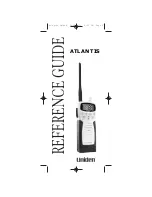
<5. Installing Impulse Piping>
5-1
IM 01C25B01-01E
5. Installing Impulse Piping
5.1 Impulse Piping Installation
Precautions
The impulse piping that connects the process
outputs to the transmitter must convey the process
pressure accurately. If, for example, gas collects
in a liquid-filled impulse line, or the drain for a
gas-filled impulse line becomes plugged, it will
not convey the pressure accurately. Since this will
cause errors in the measurement output, select
the proper piping method for the process fluid
(gas, liquid, or steam). Pay careful attention to the
following points when routing the impulse piping
and connecting the impulse piping to a transmitter.
5.1.1 Connecting Impulse Piping to a
Transmitter
(1) Check the High and Low Pressure
Connections on the Transmitter (Figure 5.1)
Symbols “H” and “L” have been placed on the
capsule assembly to indicate high and low pressure
side. With differential pressure transmitters, connect
the high pressure side impulse line to the “H” side,
and the low pressure side impulse line to the “L”
side.
With gauge/absolute pressure transmitters, connect
the impulse line to the ‘H’ side.
F0501.ai
Pressure
connection
“H” and “L” are shown
Process connection
Process connector
Bolt
Differential Pressure Transmitter
“H” and “L” are shown
Process connection
Process connector
Bolt
Gauge/Absolute Pressure Transmitters
Figure 5.1
“H” and “L” Symbols on a Capsule
Assembly
(2) Changing the Process Connector Piping
Connections (Figure 4.1) (for differential
pressure transmitters)
The impulse piping connection distances can be
changed between 51 mm, 54 mm and 57 mm by
changing the orientation of the process connectors.
This is convenient for aligning an impulse line with a
process connectors.
(3) Tightening the Process Connector Mounting
Bolts
After connecting an impulse line, tighten the
process connector mounting bolts uniformly.
(4) Removing the Impulse Piping Connecting
Port Dustproof Cap
The impulse piping connecting port on the
transmitter may be covered with a plastic cap to
keep out dust. This cap must be removed before
connecting the line. (Be careful not to damage the
threads when removing this cap. Never insert a
screwdriver or other tool between the cap and port
threads to remove the cap.)
(5) Connecting the Transmitter and 3-
Valve Manifold (for differential pressure
transmitters)
A 3-valve manifold consists of two stop valves to
block process pressure and an equalizing valve
to equalize the pressures on the high and low
pressure sides of the transmitter. Such a manifold
makes it easier to disconnect the transmitter
from the impulse piping, and is convenient when
adjusting the transmitter zero point.
There are two 3-valve manifold types: the pipe-
mounting type and the direct-mounting type; care
should be taken with respect to the following points
when connecting the manifold to the transmitter.
















































